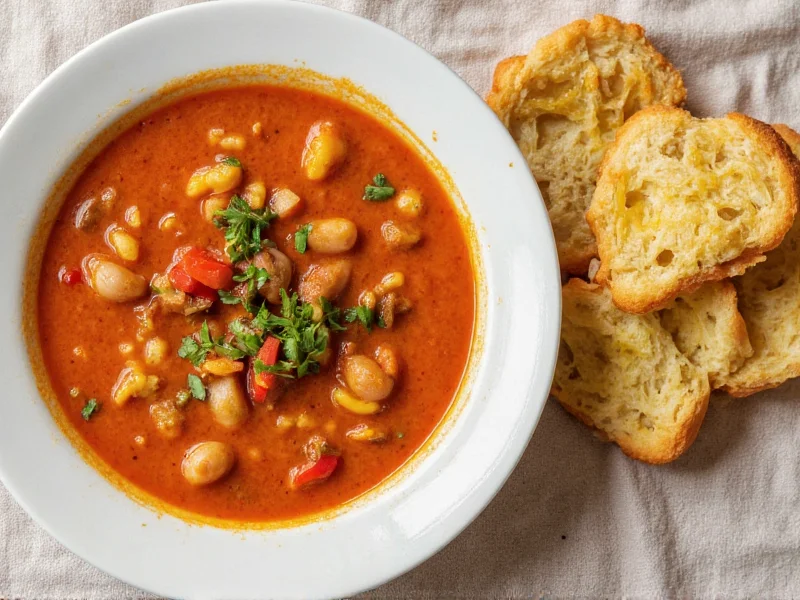Understanding Soup Image Applications
Soup photography serves multiple purposes across the culinary digital landscape. Food bloggers rely on compelling soup images to increase engagement with their recipes. Restaurant websites use professionally shot soup photographs to showcase seasonal specials and drive menu selections. Culinary educators incorporate soup images into instructional materials to demonstrate proper presentation techniques.
When evaluating soup images for professional use, consider these critical factors:
- Visual appeal - Does the image make the soup look appetizing?
- Technical quality - Is the image properly exposed and in focus?
- Contextual relevance - Does the image match the intended usage scenario?
- Copyright status - Are usage rights clearly defined and appropriate?
Where to Source Quality Soup Images
Finding the right soup images depends on your specific needs and budget constraints. Professional food photography requires significant investment, while stock resources offer more accessible alternatives.
| Resource Type | Best For | Quality Level | Cost Considerations |
|---|---|---|---|
| Professional Food Photography | Branding, high-end publications | Exceptional | $$$ (500-2000+ per image) |
| Premium Stock Sites | Commercial websites, marketing | High | $$ (20-100 per image) |
| Free Stock Resources | Personal blogs, educational use | Variable | Free (with attribution) |
| Custom Photography | Unique branding requirements | Customizable | $$-$$$ (equipment + time) |
Essential Techniques for Professional Soup Photography
Capturing mouthwatering soup images requires specific technical approaches. Natural lighting remains the gold standard for food photography, particularly soft window light during morning or late afternoon hours. Position your setup near a north-facing window for consistent, diffused illumination without harsh shadows.
Composition plays a crucial role in effective soup photography. Consider these professional techniques:
- Use shallow depth of field (f/2.8-f/5.6) to create visual separation between subject and background
- Incorporate steam elements to convey temperature and freshness
- Style with complementary props that enhance rather than distract from the main subject
- Capture multiple angles (overhead, 45-degree, straight-on) to showcase different aspects
- Add finishing touches like fresh herbs or droplets for visual interest
Copyright Considerations for Soup Images
Understanding image rights prevents legal complications when using soup photographs. Many beginners mistakenly assume all online images are free to use, potentially exposing themselves to copyright infringement claims.
When sourcing soup images, verify these critical elements:
- License type - Commercial vs. editorial usage rights differ significantly
- Model releases - Required when identifiable people appear in images
- Property releases - Necessary for certain locations or branded items
- Attribution requirements - Some licenses mandate credit to the creator
- Modification rights - Check if editing the original image is permitted
For recipe bloggers and culinary websites, consider creating original soup photography to establish unique visual branding while avoiding copyright concerns entirely. Even basic smartphone photography can produce effective results when following proper food styling principles.
Optimizing Soup Images for Digital Platforms
Technical optimization ensures your soup images perform well across various digital channels. High-resolution files may look impressive but can significantly slow page loading times, negatively impacting user experience.
Follow these optimization guidelines for soup images:
- Resize images to appropriate dimensions (1200px width typically sufficient for web)
- Compress files using tools like TinyPNG or ShortPixel without visible quality loss
- Choose appropriate formats (JPEG for photographs, WebP for modern browsers)
- Implement responsive image techniques with srcset attributes
- Add descriptive alt text containing relevant keywords like 'creamy tomato soup photography'
Avoiding Common Soup Photography Mistakes
Even experienced food photographers occasionally make errors that diminish the impact of soup images. Recognizing these pitfalls helps produce more effective visual content.
Most frequent mistakes include:
- Over-styling that distracts from the soup itself
- Poor lighting creating unappetizing color casts
- Using inappropriate backgrounds that clash with soup colors
- Shooting with flash that creates harsh reflections on liquid surfaces
- Ignoring the importance of steam elements in hot soup presentations
For restaurant marketing specifically, ensure your soup images accurately represent what customers will receive. Misleading photography damages credibility and creates negative dining experiences when reality doesn't match expectations.
Practical Applications Across Culinary Industries
Different culinary sectors utilize soup images in specialized ways. Recipe developers focus on step-by-step visual guidance, while restaurant marketers prioritize mouthwatering hero shots. Understanding these variations helps select or create the most effective soup images for your specific purpose.
Consider these industry-specific approaches:
- Recipe blogs - Use multiple angles showing texture and ingredients
- Restaurant websites - Feature high-end styling matching brand identity
- Culinary education - Include technical shots demonstrating techniques
- Food packaging - Ensure accurate color representation for consumer expectations











 浙公网安备
33010002000092号
浙公网安备
33010002000092号 浙B2-20120091-4
浙B2-20120091-4